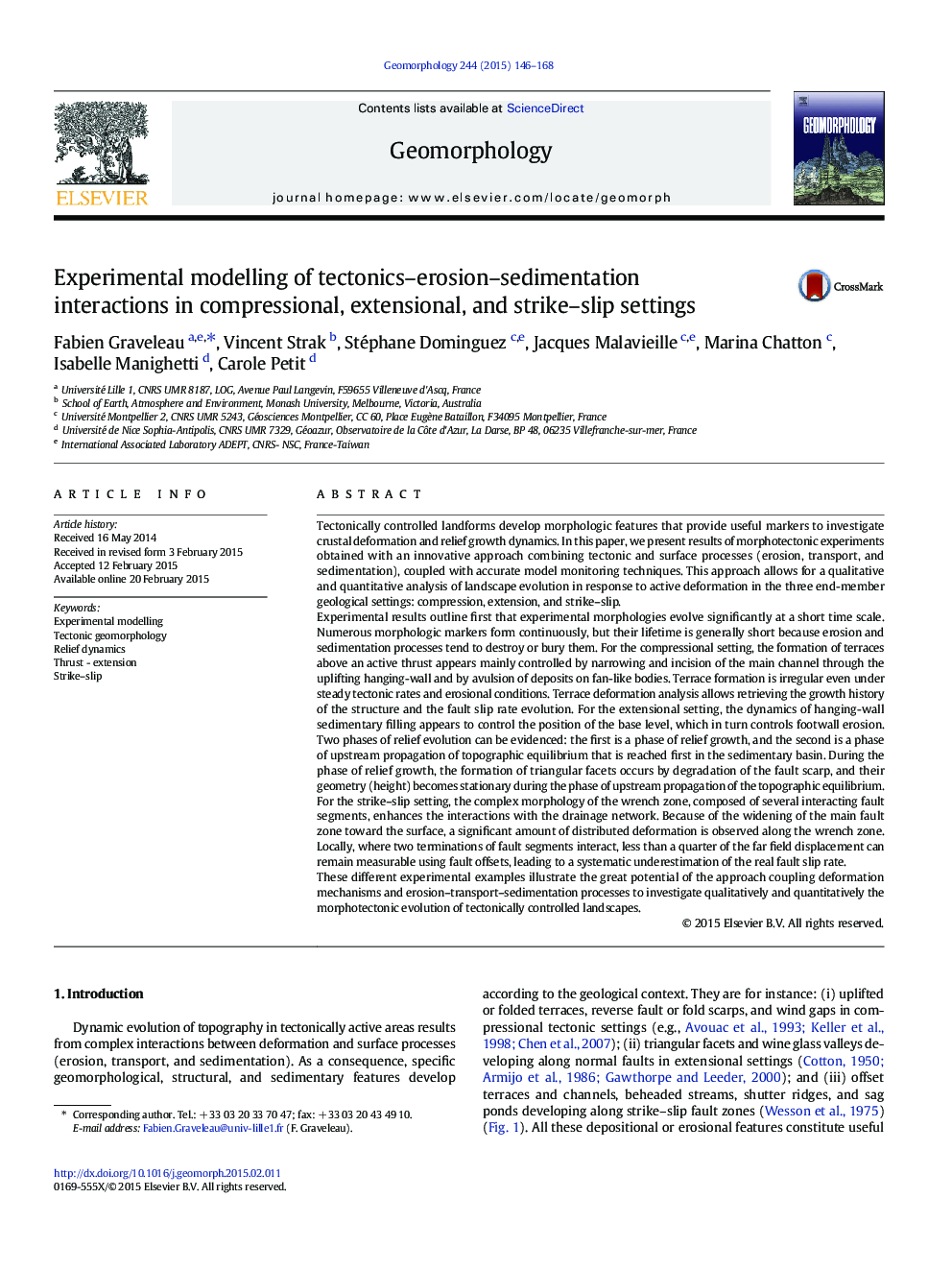| کد مقاله | کد نشریه | سال انتشار | مقاله انگلیسی | نسخه تمام متن |
|---|---|---|---|---|
| 4684186 | 1635405 | 2015 | 23 صفحه PDF | دانلود رایگان |
• Experimental models investigate the evolution of tectonically-controlled landscapes.
• The formation and deformation of several morphotectonic markers is studied.
• Topography evolution along a thrust, a normal and strike-slip fault is analysed.
• Results emphasize the interest of understanding morphotectonic marker dynamics.
Tectonically controlled landforms develop morphologic features that provide useful markers to investigate crustal deformation and relief growth dynamics. In this paper, we present results of morphotectonic experiments obtained with an innovative approach combining tectonic and surface processes (erosion, transport, and sedimentation), coupled with accurate model monitoring techniques. This approach allows for a qualitative and quantitative analysis of landscape evolution in response to active deformation in the three end-member geological settings: compression, extension, and strike–slip.Experimental results outline first that experimental morphologies evolve significantly at a short time scale. Numerous morphologic markers form continuously, but their lifetime is generally short because erosion and sedimentation processes tend to destroy or bury them. For the compressional setting, the formation of terraces above an active thrust appears mainly controlled by narrowing and incision of the main channel through the uplifting hanging-wall and by avulsion of deposits on fan-like bodies. Terrace formation is irregular even under steady tectonic rates and erosional conditions. Terrace deformation analysis allows retrieving the growth history of the structure and the fault slip rate evolution. For the extensional setting, the dynamics of hanging-wall sedimentary filling appears to control the position of the base level, which in turn controls footwall erosion. Two phases of relief evolution can be evidenced: the first is a phase of relief growth, and the second is a phase of upstream propagation of topographic equilibrium that is reached first in the sedimentary basin. During the phase of relief growth, the formation of triangular facets occurs by degradation of the fault scarp, and their geometry (height) becomes stationary during the phase of upstream propagation of the topographic equilibrium. For the strike–slip setting, the complex morphology of the wrench zone, composed of several interacting fault segments, enhances the interactions with the drainage network. Because of the widening of the main fault zone toward the surface, a significant amount of distributed deformation is observed along the wrench zone. Locally, where two terminations of fault segments interact, less than a quarter of the far field displacement can remain measurable using fault offsets, leading to a systematic underestimation of the real fault slip rate.These different experimental examples illustrate the great potential of the approach coupling deformation mechanisms and erosion–transport–sedimentation processes to investigate qualitatively and quantitatively the morphotectonic evolution of tectonically controlled landscapes.
Figure optionsDownload as PowerPoint slide
Journal: Geomorphology - Volume 244, 1 September 2015, Pages 146–168
